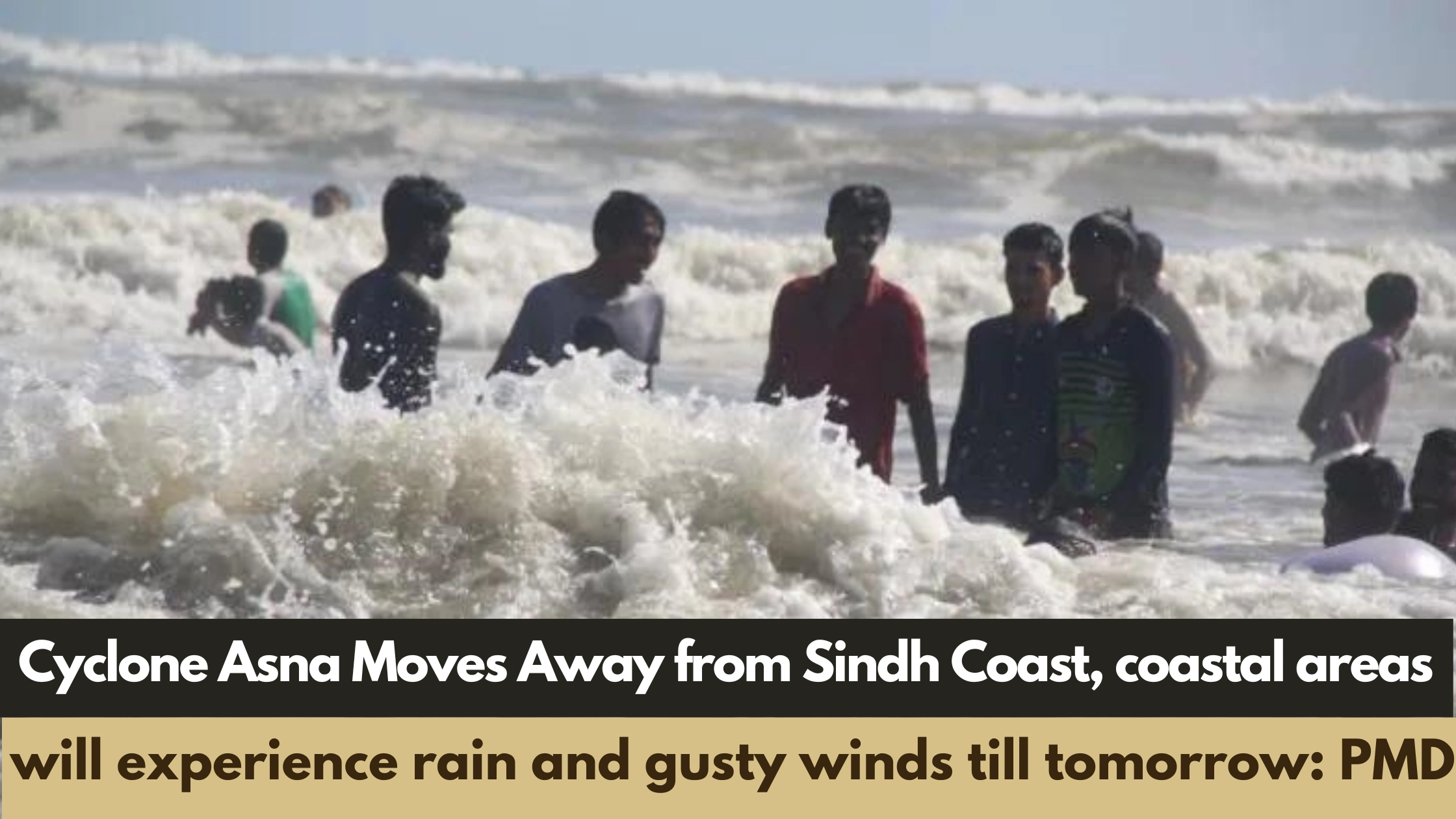A cyclone may soon hit Pakistan’s most populous city. Karachi has the legacy of the Sufi saint Abdullah Shah Ghazi.
A typhoon is expected over Pakistan’s southern city of Karachi, which is located on the country’s Arabian Sea coast.
The city saw school closures and weather advisories after a night of scattered rain on Friday.
Yet, amid concerns over the impending storm, Karachi’s history is on its side – many tropical cyclones expected to hit the city have ultimately missed out. And devotees of the city’s patron saint, Abdullah Shah Ghazi, whose shrine is in Karachi, believe it is Ghazi, and a storm-related legacy, that protects Karachi.
Here’s more about Asna, Ghazi’s legend, and what science says about why Karachi really does tend to avoid being hit by storms.
What is a storm surge?
Officials have warned that a tropical cyclone may hit Pakistan. If this happens, his name will be Asna. A deep depression, a very strong low-pressure area over the run-off Kuch in India’s Gujarat, is slowly moving towards Pakistan.
As of Friday, it is 200 kilometers (124 miles) from Karachi, according to a warning issued by the Pakistan Meteorological Department. The depression is expected to intensify into a cyclonic storm due to favorable weather conditions, the warning added.
Some areas of Karachi received 147 mm (5.79 inches) of rain overnight on Thursday, a local meteorological department reported. Karachi’s Mayor Murtaza Wahab wrote in an X-Post on Thursday evening, “I would request the residents of Karachi, especially motorcyclists, to avoid unnecessary movement.”
It has been raining for the past 3 days and heavy rain is expected in the next few hours with strong winds. I would request the residents of Karachi, especially motorcyclists, to avoid unnecessary movement. Stay safe everyone and call 1339 in case of emergency.
— Murtaza Wahab Siddiqui (@murtazawahab1) August 29, 2024
Pakistani newspaper Dawn quoted Chief Meteorologist Sardar Sarfaraz as saying that if it becomes a typhoon, it will be the first storm in the Arabian Sea in August since 1976.
What is the legend of Abdullah Shah Ghazi?
Ghazi was a Sufi Muslim saint who lived in the 8th century.
Historical accounts differ, but most agree that Ghazi was an Arab, and came to settle in Sindh province – where Karachi is – with his brother Sayyid Misri Shah. Many believe he was born in Medina, Saudi Arabia, while some accounts suggest he came from Iraq.

It is believed that he was ambushed and killed by his enemies in the forests of interior Sindh. A group of his supporters buried him on a sandy hill, located in the Clifton area of Karachi’s seaside.
After years of renovation, his shrine has become an architectural and spiritual attraction, attracting devotees from across the country who travel to the south of Pakistan just to seek Ghazi’s blessings.
Legend has it that the day before, a group of fishermen in a fishing village were caught in a storm. Ghazi took his food bowl and filled it with water, stopping the storm.
Now, whenever a storm is about to hit the city, thousands of devotees seek his miracles, believing that his presence will divert the storm from the city.
Several cyclones, including Peth in 2010, Nilofar in 2014, Tokte in 2021, and Baparjoy in 2023, have diverted instead of making landfall in Karachi.
Has there been a storm in Karachi before?
By the time the cyclone reached Karachi, it had weakened and failed to make landfall.
However, there are other ways in which they have affected the city, Aafia Salam, a Pakistani environmental journalist, told Al Jazeera. Salam holds a Master’s degree in Geography from the University of Karachi.
Salam said a possible topographic explanation for hurricanes not making landfall in the city could be that “Karachi is curved inward”.However, he added, “Karachi has been affected by different aspects of these different storms”.
For example, in 2021, while tornadoes did not make landfall in Karachi, the city experienced dust storms and torrential rains. Local media reported that five people, including a woman and two children, were killed in the incidents of roof and wall collapse due to rain and wind.
“There are different scales to measure severity,” Salam said. Destruction is one, physical damage is another.
He explained that Karachi, which has a population of about 15 million, is full of “unsafe structures such as huge rickety billboards and dilapidated buildings”. In such a city, a storm that damages infrastructure can be far more damaging than meteorologists otherwise predict.
What does science say about why Karachi was not hit by storms?
While some people believe in miracles, scientists have a different explanation for the fact that Karachi has so far been spared the brunt of the storms.
Fahad Saeed, climate scientist at think tank Climate Analytics, said: “The main reason is that the Arabian Sea has generally calm waters. This means that the regional conditions for a severe storm in the month of August are not suitable.
Storms moving towards Karachi end up in the “depression” stage – before they turn into cyclones – he explained. Depressions are usually shallow, but when they are deep, which means they go up to a few kilometers above sea level, they gain more energy and develop into storms.
Saeed added that easterly winds in the mid-upper atmosphere, which are common in this part of the Arabian Sea during the monsoon season, also create unfavorable conditions for the development of cyclones.
During this time of year, we have strong easterlies in the upper atmosphere. These are winds that move from east to west in the mid-upper atmosphere and discourage the formation of hurricanes or depressions into cyclones.
Historically, only three cyclones have developed in the Arabian Sea region in August, but they either moved westward due to these easterlies or dissipated before making strong landfall.










